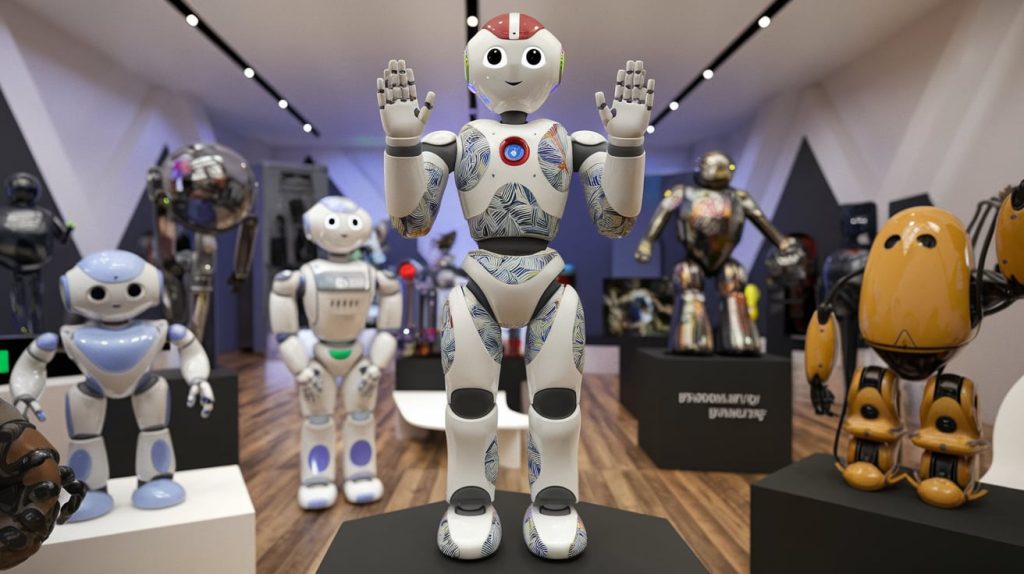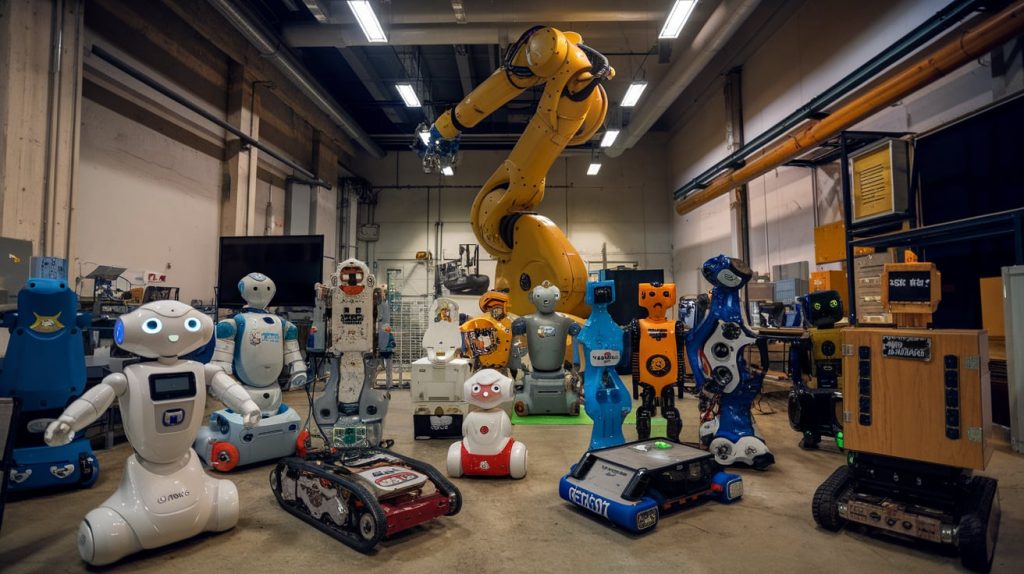Table of Contents
In the ever-evolving landscape of technology, robots have begun to play an increasingly significant role in art and design. What was once considered the exclusive domain of human creativity is now being augmented by machines capable of producing stunning works of art, innovative designs, and even challenging the boundaries of imagination. From AI-powered design tools to robotic sculptures, the integration of robotics in creative fields is reshaping how we think about art and innovation.
Robots and Art: A New Era of Creativity

Art has always been a reflection of human expression, but robots are now contributing to this world in unprecedented ways. Machines equipped with AI algorithms and advanced robotics are creating artworks that rival those made by humans.
Generative Art and AI
One of the most notable advancements in robotic art is generative art, where algorithms generate creative pieces based on predefined rules or datasets. Tools like DeepDream and DALL·E allow robots to analyze massive amounts of data, learn artistic styles, and produce unique pieces of art. For example, the robot artist Ai-Da has gained global recognition for its ability to sketch portraits, paint, and even write poetry.
Learn more about Ai-Da’s capabilities here.
Robots as Sculptors
Robots are also being utilized in sculpture-making, where their precision and ability to handle complex materials excel. Advanced robotic arms can carve intricate designs in stone, metal, and wood with incredible accuracy. Artists like Yuri Suzuki collaborate with robotic systems to create installations that blend human creativity with mechanical precision.
The Role of Robots in Design
Robots are revolutionizing design processes across various industries, including fashion, architecture, and product development.
Fashion Design
In the world of fashion, robots are being used to design and create garments with intricate patterns that would be impossible or highly time-consuming for humans to achieve. Technologies like 3D knitting robots enable the production of customized clothing with minimal waste, aligning with sustainable design practices. For instance, brands like Iris van Herpen are blending robotics and haute couture to produce futuristic designs.
Architectural Design
Robots are also transforming architecture. With their ability to work tirelessly and precisely, robotic systems are being used for 3D printing structures, creating detailed models, and even constructing entire buildings. The combination of parametric design software and robotic construction methods allows architects to explore bold, unconventional shapes that were once only theoretical.
Explore the use of robotics in architecture at Robotics in Architecture.
Product Design and Prototyping
In product design, robots are used for rapid prototyping and testing. Robotic arms equipped with advanced sensors can manipulate and assemble components with high precision, speeding up the design process. This capability is particularly valuable in industries like automotive and consumer electronics, where innovation cycles are short.
Benefits of Robots in Art and Design

The integration of robots into creative industries brings numerous benefits, including:
- Enhanced Precision: Robots can execute highly detailed tasks with accuracy, allowing for the creation of intricate designs that might be impossible for human hands.
- Efficiency: Robots can work tirelessly, reducing the time required to complete large-scale projects. This efficiency is especially valuable in fields like architecture and manufacturing.
- Exploration of New Aesthetics: Robots enable artists and designers to experiment with new forms, materials, and styles, pushing the boundaries of traditional creativity.
- Accessibility: Robotic tools democratize creativity by providing artists and designers with access to advanced technologies that were once prohibitively expensive or complex.
Challenges and Ethical Considerations
While the use of robots in art and design offers exciting possibilities, it also raises important questions:
- Authenticity and Originality: Can art created by robots be considered “authentic,” and who owns the copyright—the programmer or the machine?
- Job Displacement: As robots become more capable, there is concern that they may replace human roles in creative fields.
- Bias in AI: The algorithms driving robotic creativity often reflect the biases present in their training data, which can influence the output in unintended ways.
Addressing these challenges requires collaboration between technologists, artists, and policymakers to ensure that robots augment rather than replace human creativity.
The Future of Robots in Creativity

The future of robots in art and design is bright, with several emerging trends pointing toward greater integration:
- Collaborative Creativity: Instead of replacing humans, robots will increasingly serve as collaborators, assisting artists and designers in their creative processes. For example, robotic tools might generate initial sketches or prototypes that artists can refine.
- Interactive Art: Robots will play a key role in creating immersive and interactive art installations, where viewers can engage directly with the artwork.
- Sustainability: Robots will enable the use of eco-friendly materials and methods in design, contributing to sustainable practices in industries like fashion and architecture.
- Personalized Creations: With advancements in AI, robots will create highly personalized artworks and designs tailored to individual preferences, offering unique and bespoke experiences.
Conclusion
Robots are not just tools but partners in the evolving landscape of art and design. They bring precision, efficiency, and innovation to creative fields while challenging traditional notions of creativity and authorship. As technology continues to advance, the collaboration between humans and robots will likely lead to even more groundbreaking achievements in art and design.
To fully realize the potential of robotic creativity, it is essential to address ethical considerations, foster collaboration between disciplines, and embrace the unique possibilities that robots bring to the table. By doing so, we can ensure that the future of art and design is as inclusive, innovative, and inspiring as possible.
For further reading on robots and creativity, visit Creative Machines.



Pingback: Blog Writing Basics: A Comprehensive Guide for Beginners